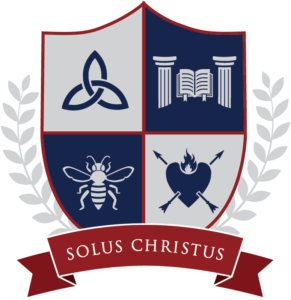Right now the school choirs are working hard—in about two weeks (February 5th), they are going to sing during the Sunday Divine Service at Trinity. The different choirs will have various pieces of music prepared, but the entire school together with the congregation will be singing a beloved Lutheran hymn: “Salvation unto Us Has Come.”
This hymn is one of our oldest hymns we could properly call “Lutheran,” since it was one of the hymns to appear in the very first Lutheran hymnal in 1524. The hymnal was descriptively called the “Eight Hymn Book” (“Achtliederbuch”), and along with “Salvation unto Us Has Come” included other hymns we know well today: “Dear Christians, One and All, Rejoice,” “O Lord, Look Down from Heaven, Behold,” and “From Depths of Woe I Cry to Thee.” Four of the hymns were written by Martin Luther, three by Paul Speratus (a Lutheran pastor greatly influenced by Luther), and one by Justus Jonas (another reformer who was close friends with Luther).
These men’s hymns were a product of a great need that existed in the church at the time of the reformation: German hymns that could be sung by the congregation during the Divine Service. At the time, the Divine Service was conducted in Latin, and Luther was a large advocate for the insertion of German hymns in places such as after the gradual, Sanctus, and Agnus Dei. Luther eventually wanted churches to have the entire Divine Service in their common German language. But until then, he acknowledged that even to have German hymns was a large undertaking; there were yet to be found many poets who could compose beautiful hymns that were suitable for church and that taught well the Word of God. Luther encouraged any Lutheran poet to use his talents in writing good hymns for the Christian church.
We are in an incredibly blessed position as Lutherans in 2023, having not a mere “Eight Hymn Book” (which, by the way, was not mere at all; all its hymns are outstanding), but hymnals containing the work of even more great Lutheran hymns writers that have arisen over time. Wouldn’t Luther have been overjoyed to know there would be a Paul Gerhardt, a Thomas Kingo, a Philip Nicholai, or a Johann Rist? And today we need only look up these men in an index for an instant dose of fantastic Lutheran hymnody.
Great hymns like “Salvation unto Us Has Come” teach what God’s Word says in a uniquely beautiful way: not only are they true, but they exemplify the beauty of that truth with beautiful music. On top of that, they are easy to sing, which means a kindergartener can experience the same happiness and confidence in singing God’s Word as the elderly church member sitting in the next pew. I consider it an enormous blessing to be able to help teach these hymns to your children each day in school, so that they can carry God’s promises in song as they go about their lives in the joy of the Gospel.
Let me not doubt, but truly see
Your Word cannot be broken:
Your call rings out, “Come unto Me!”
No falsehood have You spoken.
Baptized into Your precious name,
My faith cannot be put to shame,
And I shall never perish.
LSB 555:7
In Christ,
Mr. Hahn

